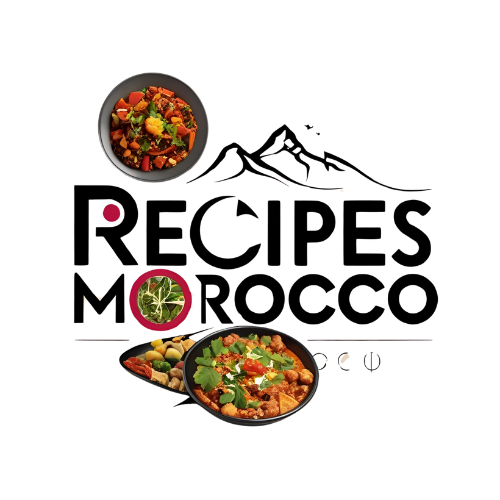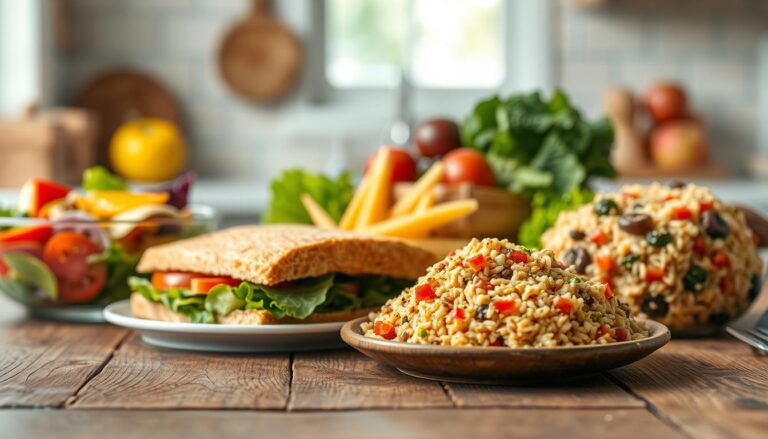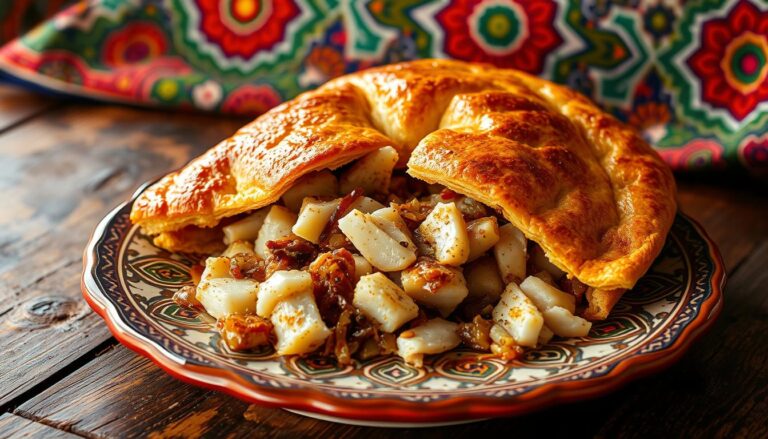The Soul of Moroccan Food: A Gastronomic Adventure

Moroccan cuisine is a colorful tapestry made from the many ethnicities, customs, and topographies that make up the nation. Morocco, a country at the intersection of Europe, Africa, and the Middle East, has a rich culinary heritage that is reflected in its cuisine, which is inspired by Mediterranean, Berber, Arab, and Andalusian flavors. This distinctive combination of ingredients, spices, and cooking methods produces a delectable culinary experience that is firmly ingrained in the locals’ culture. Moroccan food reflects the country’s environment, history, and the hospitality of its people, from the busy souks of Marrakech to the tranquil coastal towns of Essaouira. The main ingredients, famous dishes, preparation techniques, regional variations, and the cultural significance of food in Moroccan society will all be covered in this article’s culinary journey through the essence of Moroccan cuisine.
1. A Changing Mix of Factors
Centuries of trade, migration, and conquest have molded Moroccan cuisine, making it a veritable melting pot. Many traditional foods have their roots in the farming activities of the native Berber community. A multitude of spices, herbs, and novel cooking methods were brought during the Arab conquest in the seventh century. A Spanish flavor, typified by the use of citrus, almonds, and saffron, was introduced by the Andalusian influence, especially in the southern areas. The French colonial era also influenced Moroccan cuisine, bringing with it café culture and pastries that are now essential to contemporary Moroccan life. Each dish in this rich and diverse cuisine tells a tale of its origins and the people who made it, thanks to the blending of various influences.
2. Essential Components: Herbs and Spices
A great variety of spices and herbs form the foundation of Moroccan cuisine, defining its flavor profile. While paprika, coriander, and cumin are essentials, ginger, cinnamon, and saffron provide complexity and warmth. Up to 30 different spices can be found in ras el hanout, a complex spice combination that is exclusive to Moroccan cooking and demonstrates the nation’s enjoyment of strong flavors. Dishes are brightened by the liberal use of fresh herbs like parsley and cilantro. Morocco is known for harmonizing flavors by blending richness and acidity, which is further highlighted by the use of preserved lemons and olives. This focus on herbs and spices not only improves the flavor of Moroccan food but also illustrates how important flavor is to Moroccan culture.
3. Classic Recipes: The Essence of Moroccan Cooking
It would be impossible to discuss Moroccan cuisine without mentioning some of its most well-known dishes. The most well-known representation of Moroccan cookery is probably the tagine, a stew that is cooked slowly and is named for the ceramic pot it is prepared in. A range of ingredients, such as lamb, chicken, fish, and a variety of vegetables, can be included in tagines and cooked with a mixture of spices. Another essential component of Moroccan cuisine is couscous, which is typically served on Fridays and is cooked with steamed semolina and paired with meat and vegetables. During Ramadan, harira—a filling soup prepared with lentils, chickpeas, and tomatoes—is frequently offered as a symbol of hospitality and community. These dishes highlight the richness of Moroccan flavor and cultural relevance, perfectly capturing the essence of Moroccan cuisine.
4. Cooking Techniques: Innovation and Tradition
Moroccan cooking techniques embrace contemporary innovation while demonstrating a profound regard for tradition. An excellent illustration of this combination is the tagine, which enables slow cooking that intensifies flavors and softens meat. Additionally common is grilling, which involves cooking marinated meat skewers over open flames to give them a smokey flavor. Another popular method is steaming, especially for couscous, which is typically made over simmering broth to absorb flavors. Modern Moroccan chefs are experimenting more and more with fusion cuisine, embracing international influences while respecting the origins of their culinary heritage, even though traditional methods are still valued. Moroccan food is kept interesting and relevant for both residents and tourists thanks to this innovative strategy.
5. Regional Differences: A Scoop of Variety
Morocco’s varied topography results in unique regional culinary traditions. Seafood is the main attraction of coastal cities like Essaouira and Casablanca, where fresh catches are cooked in a variety of ways, such as grilled fish or fragrant fish tagines. Rich meat meals, frequently served with robust stews, are the specialty of the inland areas, including Fes and Marrakech. Vegetable-based recipes are made more colorful by the fresh food and herbs that are accessible in the Atlas Mountains. The use of spices and the cooking of regional specialties like mechoui, or entire roasted lamb, are examples of nomadic Berber influences in the Sahara. Morocco’s culinary scene is enhanced by these regional variations, which provide a variety of tastes and ingredients that capture the nation’s many cultures and landscapes.
6. Moroccan Culture and the Significance of Food
In Moroccan culture, food is more than just a means of subsistence; it is an essential component of community and social life. Family and friends usually congregate around a shared plate for community meals, highlighting the value of being together. Moroccan culture places a strong emphasis on hospitality, and serving meals to visitors is a sign of warmth and respect. Exquisite feasts that highlight the finest of Moroccan cuisine are frequently held to commemorate traditional events like weddings and religious festivals. In families and communities, sharing a meal together creates relationships and fortifies ties. The manner that Moroccans celebrate life, love, and friendship via communal meals demonstrates the cultural significance of food.
7. Street Food: A Gastronomic Journey
A mouthwatering taste of Moroccan cuisine may be found in the country’s street food. There are many vendors providing a variety of snacks and quick eats in the busy streets and souks. Street cuisine offers a chance to experience real sensations while on the run, from spicy merguez sausages to crispy pastillas, which are savory pastries packed with seasoned pork. Breads like msemen and khobz are frequently eaten with spreads and dips like zaalouk, which is a smoky eggplant salad. Visitors can interact with local culture and enjoy the flavor of Moroccan cuisine in its most accessible form thanks to the lively environment of street food stalls. Here, sellers cheerfully offer out delectable meals, demonstrating the essence of Moroccan hospitality.
8. Moroccan Desserts: A Delightful Conclusion
Without the delicious assortment of Moroccan sweets that are served at the table, no meal is complete. Popular across the nation are pastries like baklava and briouates, which are packed with honey and almonds. Almonds, dates, and figs are frequently used in traditional confections, highlighting the abundant harvest of the nation. Traditionally served with sweets, mint tea is a representation of Moroccan hospitality and offers a cool counterpoint to rich flavors. Families frequently join together to make elaborate confections for significant occasions, making the preparation of these treats a communal activity. Moroccan sweets are a celebration of culture, custom, and community in addition to satisfying a sweet tooth.
9. The Impact of Contemporary Cooking
Moroccan cuisine has not been exempt from the ways that globalization has affected culinary traditions around the world. Chefs of today are reinventing classic recipes by adding international flavors and contemporary methods. With the emergence of fusion cuisine, Moroccan ingredients are combined with other culinary techniques to create inventive meals that appeal to a wider range of palates. However, the fundamental components of Moroccan cuisine are preserved since this evolution is approached with respect for heritage. Moroccan cuisine has benefited greatly from the growth of culinary tourism, which has enabled cooks to express their culture while embracing new influences. Moroccan cuisine will continue to flourish because of the dynamic interaction between tradition and modernity, which enhances the gastronomic landscape.
10. Final thoughts
Moroccan cuisine’s diverse range of flavors, customs, and cultural significance are what make it so special. It reflects the nation’s varied past, which has been influenced by many civilizations and the land’s particular terrain. Moroccan cuisine offers a gastronomic adventure that satisfies the senses and uplifts the spirit, from classic dishes like tagine and couscous to the lively street food scene. Beyond providing basic nourishment, food plays a significant role in Moroccan culture by promoting relationships, honoring customs, and celebrating community. Moroccan cuisine invites both locals and tourists to delve into its depths and appreciate its richness as it continues to develop, serving as a tribute to the people’s tenacity and inventiveness. We learn more about Morocco’s culture and history, which have shaped its culinary identity, in addition to appreciating its delicacies, thanks to this culinary adventure.



